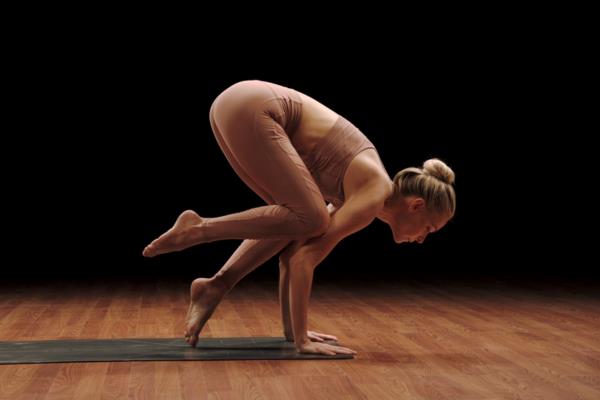
If you're a yogi looking to take your practice to the next level, crow pose (kakasana) is a great arm balance to try. Often confused with crane pose (bakasana), crow pose offers various approaches that make it accessible for yogis of all levels. Whether you're a beginner or an experienced practitioner, here's how you can master crow pose.
The Step-by-Step Guide to Crow Pose (Kakasana)
Follow these simple instructions to achieve the crow pose:
- Start in malasana (yogi's squat) with your feet hip-width apart.
- Place your hands on the floor in front of you, elbows bent, and knees against your triceps.
- Lean forward, keeping your heels close to your tailbone.
- Shift your weight forward, squeezing your legs onto your arms, engaging your core, and rounding your back.
- Pull your kneecaps as high onto your upper arms as possible before lifting your feet off the floor.
- Elevate your hips as high as possible, with your pelvis higher than your shoulders.
- Hold the pose for up to one minute, breathing slowly and deeply.
- Slowly reverse the move to return to the starting position.
Tips for Beginners
- Start by placing your shins against your upper arms if getting your kneecaps into your armpits is too challenging.
- Round your back and engage your abdominal muscles to create flexion in the lumbar spine.
- Spread your collarbones to create width across your chest.
- As you gain confidence, squeeze your legs higher on your upper arms to create lift.
Make Crow Pose Easier or Harder
If you're looking to make the crow pose easier, you can stack the tops of your shins higher up your arms or start by standing on a block for more space. On the other hand, if you want to make it harder, try placing the top of your head on the floor or explore more challenging arm balances.
Crow Pose vs. Crane Pose: What's the Difference?
The primary difference between the crow pose and the crane pose is the angle of the elbows. In crowthe pose, the elbows are bent and the forearms are vertical, while in the the crane pose, the arms are straight (or as close as possible) and the forearms are angled forward. Crow pose is a great stepping stone towards crane pose and can eventually lead to transitioning into handstands.
Benefits of Crow Pose
Aside from the overall benefits of yoga, crow pose offers specific advantages:

- Strengthens arms and shoulders
- Improves balance
- Promotes core strength and stability
Now that you have the knowledge and techniques to master crow pose, it's time to unlock your full potential on the mat. Happy practicing!
*** Please endorse our sponsor *** |
 Image Credit: Patricia Marple / AuthorsUSA.com
Image Credit: Patricia Marple / AuthorsUSA.com |
 HealthWellnessFitnessBeautyVideosPrivacy PolicyTerms And Conditions
HealthWellnessFitnessBeautyVideosPrivacy PolicyTerms And Conditions
